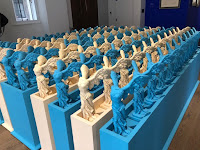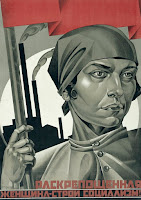A revolutionary legacy: Haiti and Toussaint Louverture

Interesting small exhibition at the British Museum looking at Toussaint Louverture and the Haiti revolution. The show looked at the history of the events from the slave uprisings of 1791 though the island declaring independence from the French in 1804 and the creating of the first black republic. We have no known images of Louverture from life but the earliest image from 1802 was shown here as a print which was sold in England aimed at a middle class audience. I hadn’t realised that Louverture was not only known as the Black Napoleon but also fought in France both for and against the revolution and died in prison in France. The display also looked at how the image of Louverture had been used by subsequent generations most interestingly in Haiti during the US occupation from 1915-34 and during the civil rights movement. The most striking image in the show was a screen-print from 1986 based on a 1938 portrait by Jacob Lawrence. Closes on 22 April 2018
























